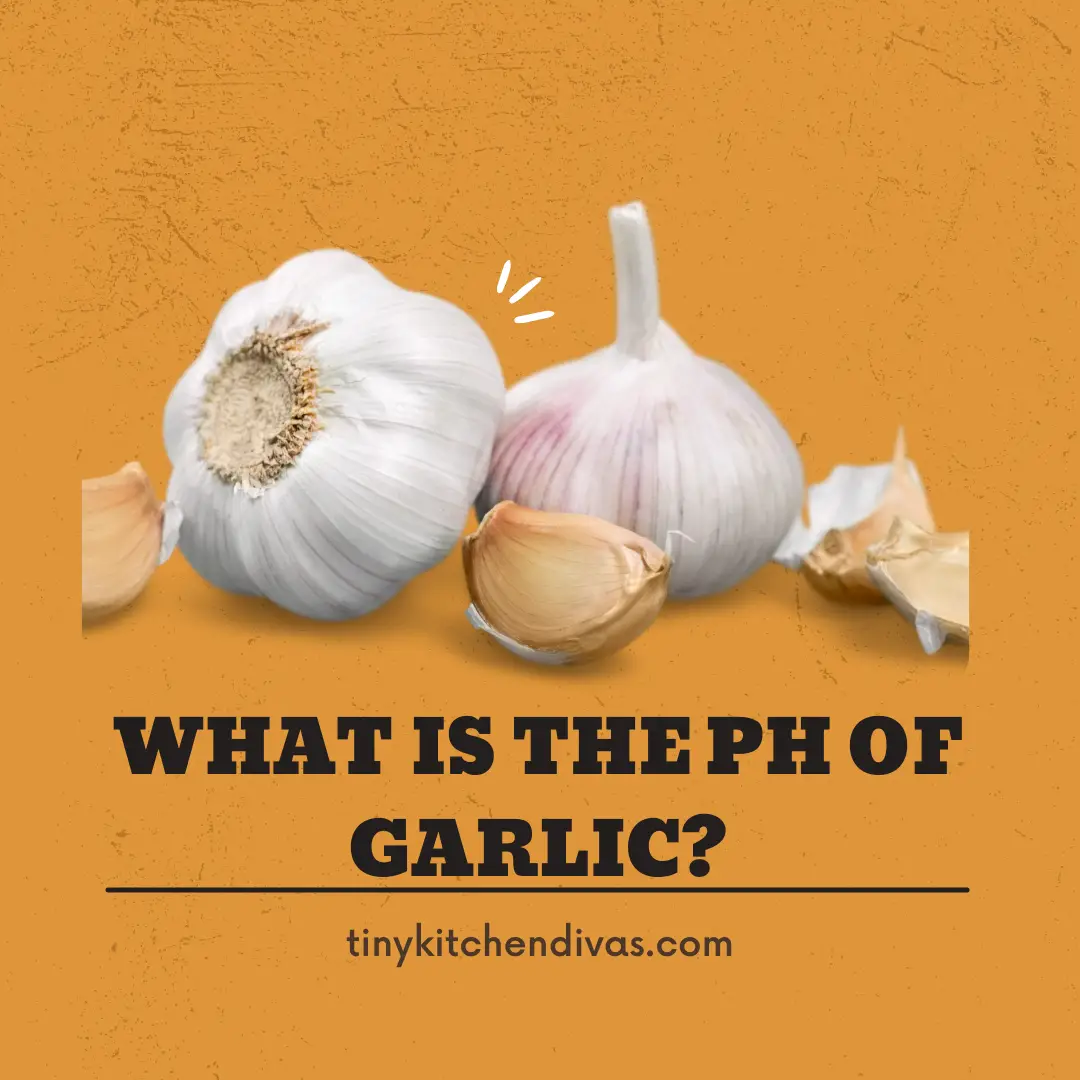Garlic is one of those vegetables that can enhance the taste of other vegetables. Whether you chop it up, mince it, or use it in powder form in your dish, the flavor improves almost immediately. There are plenty of studies that claim that garlic is a healthy addition to one’s diet. But the real question is, what is the pH of garlic?
Is Garlic Acidic?
Garlic is acidic, and even the taste of garlic is acidic. Garlic has a pH of 5.8. Although it has an acidic pH, it is not necessarily bad for an average person.
A pH value below 7 is considered acidic in nature, and above 7 would be alkaline. Vegetables that have a pH of 7 are considered neutral. Garlic, with a pH of 5.8, is definitely on the acidic side, with raw garlic considered to be acidic due to the pH value as well as due to the reactions with other food and the stomach.
Health Benefits of Garlic
Garlic can boost the immune system. The immune system plays a vital role in fighting against infections. It keeps all the diseases at bay. A weak immune system would mean that one gets sick often.
Garlic is used in the treatment of common colds. A study in 2014, titled “Garlic for Common Cold,” published in Cochrane Library, showed that a daily garlic intake reduced the number of cold participants by around 60%.
Hypertension is probably the most common indicator of heart disease, the biggest killer worldwide. The active ingredients of garlic can reduce the risk of heart disease in people who take garlic supplements and incorporate vegetables into their diet. Garlic is rich in antioxidants. Antioxidants protect the body against oxidative damage. Oxidative damage leads to the generation of free radicals, which can damage the heart and cause cancers.
Garlic is very low in calories and rich in nutrients. It contains essential nutrients like vitamin B6, vitamin C, selenium, fiber, and manganese. Garlic can potentially treat acne and cold sores. In addition, it has antibacterial properties that can expedite the healing process.
However, if you are considering garlic supplements, you should be careful if you are taking any other blood thinners. Garlic supplements are often known as blood thinners, and taking them in conjunction with another blood thinner can be dangerous.
Can Garlic Be Eaten With Acid Reflux?
Although garlic is a healthy vegetable to be included in one’s diet, you may have to limit the amount of garlic consumption if you suffer from acid reflux or heartburn. It has been reported that patients with acid reflux should avoid eating garlic as the acidic properties of garlic can make one feel uncomfortable and aggravate the symptoms.
Garlic can be taken in moderation amongst those with acid reflux symptoms. If you have intermittent episodes of heartburn, consumption of garlic in small quantities should not be an issue. A doctor should be consulted before adding garlic to meals.
How Much Garlic Do People Eat?
Garlic is added to almost all the dishes to make them delicious. Therefore, it is consumed in large quantities by people. It is estimated that one person consumes around two pounds of garlic in a year on average. That is about 300 cloves of garlic. Although the value seems a bit too much, the amount and frequency of use of garlic in food items justify the quantity.
Why Should You Not Consume Garlic?
Many people can consume garlic without experiencing any side effects. However, the onset of gastroesophageal reflux is one of the reasons why consuming garlic is not advisable. Some minor side effects include heartburn, stomach upset, and body and breath odor.
Can Raw Garlic Be Consumed?
In most recipes, garlic is typically cooked or used in powdered form. Cooking garlic may alter its taste and texture, making it softer and milder and rendering it a subtle flavor and aroma.
However, it can be consumed in raw form as well. Raw garlic has a stronger, more pungent smell and can be added to many dishes.
Should People With Acid Reflux Consume Garlic?
Acid reflux is a common condition characterized by a burning sensation in the chest. Certain food items can trigger or aggravate the symptoms of acid reflux. Despite the health benefits of garlic, a few studies have suggested that it may increase the incidence of heartburn in people with acid reflux- especially raw garlic.
Some experts suggest that since garlic has anti-inflammatory effects, it can kill the Helicobacter pylori bacteria and alleviate heartburn and soothe acidity. Consuming raw garlic is believed to provide immediate relief from symptoms of acidity.
The food we consume affects the quantity of acid in the stomach. Therefore, monitoring the diet plays a vital role in preventing or contacting acid reflux. For example, fatty and greasy food items take longer to digest, leading to more acid in the stomach. Moreover, fat-rich food items can cause the lower esophageal sphincter to relax.
What you eat and how much and when you eat play a vital role in determining the onset of symptoms of acid reflux. Large meals and late-night dinners are an absolute ‘ no’ for those who experience heartburn.
Too much food can stretch the stomach and stimulate gastric acid production. Therefore, you should avoid overeating, and the meal should be divided into five or six small meals each day.
Conclusion
Garlic has an acidic pH. It is usually a safe vegetable that you can add to the diet because of its health benefits. However, it should be consumed in moderate quantities by those who suffer from the symptoms of acid reflux. People experiencing severe symptoms of acid reflux should avoid consuming garlic.
References
Erbland, K. (2018, April 19). 11 things you might not have known about garlic. Mental Floss. https://www.mentalfloss.com/article/63100/11-things-you-might-not-have-known-about-garlic
Garlic. (n.d.). NCCIH. Retrieved May 27, 2022, from https://www.nccih.nih.gov/health/garlic
Lissiman, E., Bhasale, A. L., & Cohen, M. (2014). Garlic for the common cold. Cochrane Database of Systematic Reviews, 2020(11), CD006206. https://doi.org/10.1002/14651858.CD006206.pub4


